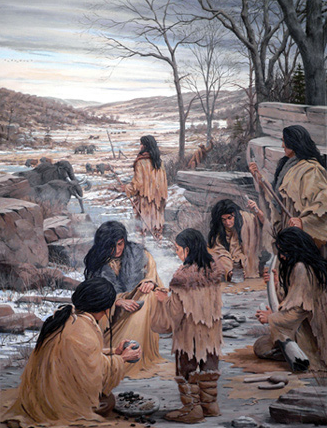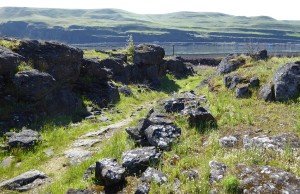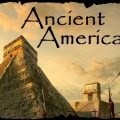
Archaeologists often refer to the era prior to 6000 BCE in North America as Paleo-Indian. This appears to have been a time when the people specialized in the hunting of big game. Briefly described below are a few of the archaeological sites in Nebraska which date to before 6000 BCE.
La Sena Site: By 17,000 BCE, Indian people were butchering mammoth at the La Sena Site (25FT177) on the shore of Medicine Creek Reservoir in Frontier County. In a chapter in Medicine Creek: Seventy Years of Archaeological Investigations, archaeologists Steven Holen and David May write:
“We have suggested that humans were responsible for the high-velocity impact fractures on thick cortical bone and for the bone flaking.”
Jensen Site: By 11,000 BCE, Indian people were butchering mammoth at the Jensen site.
Allen Site: By 9000 BCE, Indian people had occupied the Allen site (25FT50). In his chapter in Medicine Creek: Seventy Years of Archaeological Investigations, archaeologist Douglas Bamforth reports:
“One striking aspect of the Allen site collection is the number of formal diversity of bone tools it contains.”
Among these tools are needles in varying thicknesses which suggest a variety of kinds of sewing. Animal remains include bison, deer, antelope, jackrabbit, cottontail, and prairie dog. In an article in Mammoth Trumpet, George Wisner reports:
“From the data emerges a portrait of small family groups, dating back as far as the Folsom age, tapping into a variety of resources in well-wooded and moist drainages.”
By about 6300 BCE, Indian people were using the Allen site as a summer camp. They were hunting bison, antelope, deer, rabbit, and birds. They were also eating fresh water mussels and fish. Their tool kit included concave based projectile points, scrapers, lanceolate and ovid bifaces, grinding and abrasive tools, drills, eyed bone needles, and awls.
Red Smoke Site: By 7000 BCE, Indian people occupied the Red Smoke site (25FT42). In her chapter in Medicine Creek: Seventy Years of Archaeological Investigations, archaeologist Ruthann Knudson reports:
“The site appears to reflect flaked stone reduction activities while people were camped at the site, which was adjacent to exposed jasper bedrock.”
The O. V. Clary Site: By 7000 BCE, Indian people had occupied the O. V. Clary site. Archaeologists classify the people who are using this site as Allen Complex foragers using lanceolate projectile points. The site appears to have been used as a residential base camp which was occupied continuously for 5-7 months from mid- to late-summer through late winter or early spring. The site was well-sheltered with easy access to water as well as to brush and wood for fuel and for tool construction.
The primary animal which the people were hunting at this time was the bison. In an article in American Antiquity, archaeologists Matthew Hill, David Rapson, Thomas Loebel, and David May report:
“Bison are interpreted as the focal prey for the duration of the occupation. These animals were likely taken singly during encounter-type hunting within Ash Hollow and the surrounding uplands.”
Note: the information in parenthesis following the name of the site is the Smithsonian Designation System. In this system of recording archaeological sites, the first number refers to the state; this is followed by letters which refer to the county; and then a number indicating its order in being recorded. Thus 5LP 10, means that the site is in Colorado (5th state when the states are listed alphabetically), La Plata County (LP), and was the 10th site recorded in La Plata county in the State Archaeologist’s office.


Leave a Reply